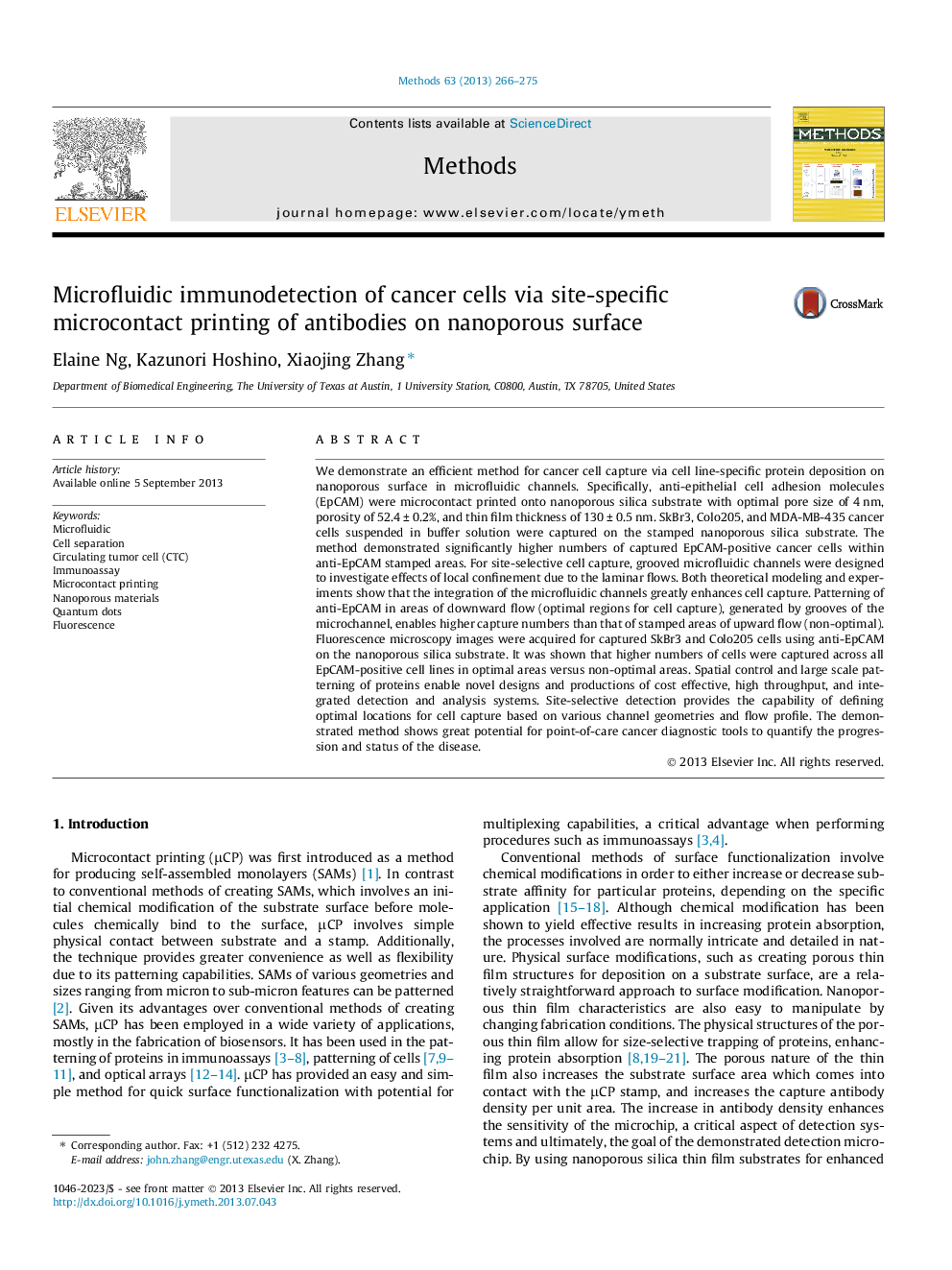| کد مقاله | کد نشریه | سال انتشار | مقاله انگلیسی | نسخه تمام متن |
|---|---|---|---|---|
| 1993542 | 1064677 | 2013 | 10 صفحه PDF | دانلود رایگان |

We demonstrate an efficient method for cancer cell capture via cell line-specific protein deposition on nanoporous surface in microfluidic channels. Specifically, anti-epithelial cell adhesion molecules (EpCAM) were microcontact printed onto nanoporous silica substrate with optimal pore size of 4 nm, porosity of 52.4 ± 0.2%, and thin film thickness of 130 ± 0.5 nm. SkBr3, Colo205, and MDA-MB-435 cancer cells suspended in buffer solution were captured on the stamped nanoporous silica substrate. The method demonstrated significantly higher numbers of captured EpCAM-positive cancer cells within anti-EpCAM stamped areas. For site-selective cell capture, grooved microfluidic channels were designed to investigate effects of local confinement due to the laminar flows. Both theoretical modeling and experiments show that the integration of the microfluidic channels greatly enhances cell capture. Patterning of anti-EpCAM in areas of downward flow (optimal regions for cell capture), generated by grooves of the microchannel, enables higher capture numbers than that of stamped areas of upward flow (non-optimal). Fluorescence microscopy images were acquired for captured SkBr3 and Colo205 cells using anti-EpCAM on the nanoporous silica substrate. It was shown that higher numbers of cells were captured across all EpCAM-positive cell lines in optimal areas versus non-optimal areas. Spatial control and large scale patterning of proteins enable novel designs and productions of cost effective, high throughput, and integrated detection and analysis systems. Site-selective detection provides the capability of defining optimal locations for cell capture based on various channel geometries and flow profile. The demonstrated method shows great potential for point-of-care cancer diagnostic tools to quantify the progression and status of the disease.
Journal: Methods - Volume 63, Issue 3, October 2013, Pages 266–275